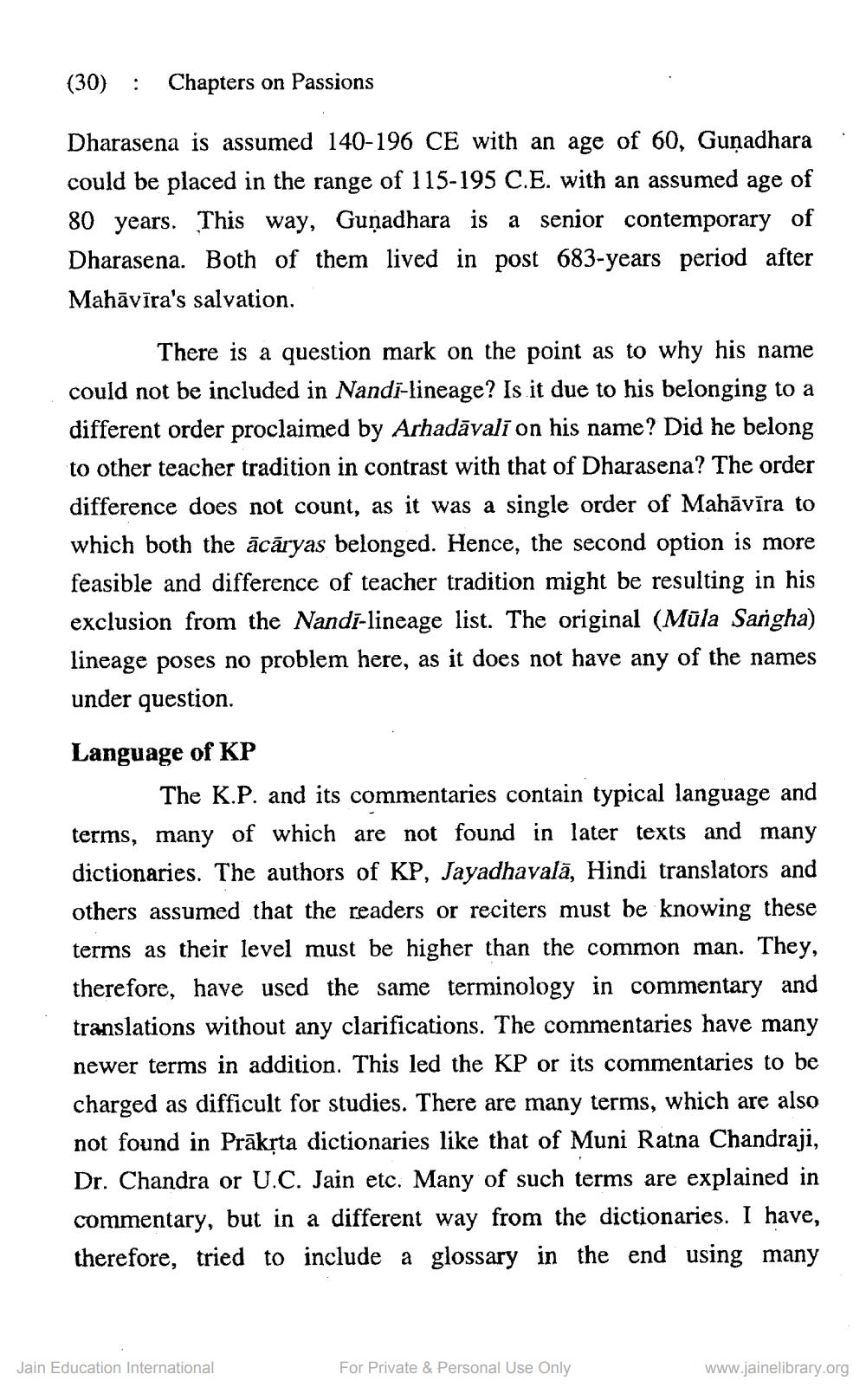________________
(30) : Chapters on Passions
Dharasena is assumed 140-196 CE with an age of 60, Gunadhara could be placed in the range of 115-195 C.E. with an assumed age of 80 years. This way, Guņadhara is a senior contemporary of Dharasena. Both of them lived in post 683-years period after Mahāvīra's salvation.
There is a question mark on the point as to why his name could not be included in Nandi-lineage? Is it due to his belonging to a different order proclaimed by Arhadāvali on his name? Did he belong to other teacher tradition in contrast with that of Dharasena? The order difference does not count, as it was a single order of Mahāvīra to which both the ācāryas belonged. Hence, the second option is more feasible and difference of teacher tradition might be resulting in his exclusion from the Nandi-lineage list. The original (Mūla Sangha) lineage poses no problem here, as it does not have any of the names under question.
Language of KP
The K.P. and its commentaries contain typical language and terms, many of which are not found in later texts and many dictionaries. The authors of KP, Jayadhavalā, Hindi translators and others assumed that the readers or reciters must be knowing these terms as their level must be higher than the common man. They, therefore, have used the same terminology in commentary and translations without any clarifications. The commentaries have many newer terms in addition. This led the KP or its commentaries to be charged as difficult for studies. There are many terms, which are also not found in Prākrta dictionaries like that of Muni Ratna Chandraji, Dr. Chandra or U.C. Jain etc. Many of such terms are explained in commentary, but in a different way from the dictionaries. I have, therefore, tried to include a glossary in the end using many
Jain Education International
For Private & Personal Use Only
www.jainelibrary.org




